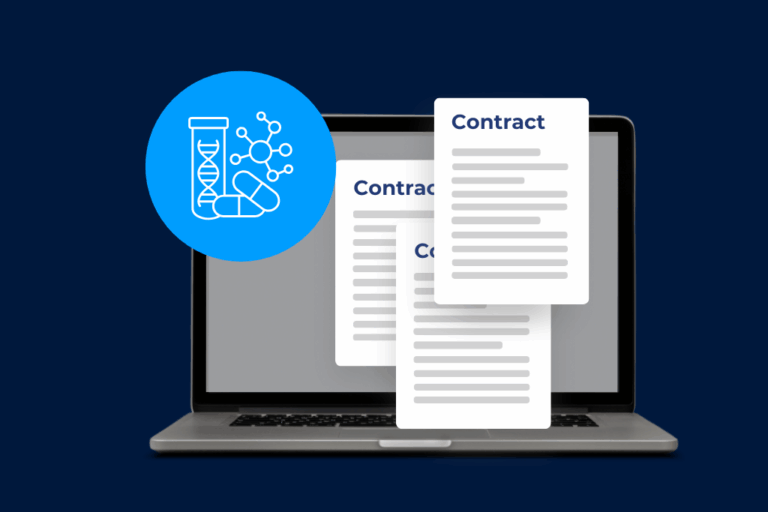Engagement letters are a crucial element for proper contract management. Nevertheless, they don’t get all the attention they deserve.
Key Insights
- Centralizing engagement letters can boost contract management in general
- A clear view of engagement letters minimizes legal risks and compliance errors
- Tools such as Matter Management platforms are a good solution for engagement letter management.
Contracts are usually considered as the ultimate binding agreement in business. As much as they are, engagement letters carry the same weight.
Engagement letters tend to be treated as procedural necessities, yet as demand grows for legal departments to move faster, these foundational agreements warrant a deeper look. Indeed, engagement letters are also binding agreements, and require compliance to avoid any legal risks. They are essential instruments of alignment, accountability, and strategic control when it comes to managing external counsel.
The question now is, how can legal teams better handle these crucial documents to enhance business operations?
Why Engagement Letters Matter More Than You Think
For legal teams there’s no real “useless” legal document, but as previously mentioned, engagement letters tend to be done and quickly forgotten. The reality is these agreements are more powerful than some may think.
A Foundation for Accountability
At their core, engagement letters formalize the terms of collaboration between internal legal teams and external parties. We can take the example of a corporate legal team and external counsel. Besides defining scope, rates, deliverables, and responsibilities they also provide:
If done well, engagement letters set the tone for the future legal engagement between two parties. Picture an internal legal team looking for external counsel to handle a dispute. With a properly crafted engagement letter the organization stays away from ambiguous terms and sets clear expectations towards external counsel.
Common Gaps in Current Engagement Letter Management
Many legal teams struggle with engagement letter management due to fragmented data sources and document storage.
Engagement letters tend to live in disconnected systems, just as it happens with contracts. Storing such precious documents on personal drives or in email threads is risky and inefficient. Furthermore, such lack of centralization makes reviews and approvals harder…
Overall, each gap leads to another, and the result is weakened capability to monitor risks, locate documents and even prepare future contracts with external counsel.
Standardization is Key
Creating Consistency Through Structured Templates
One of the simplest yet most effective ways to strengthen engagement letter practices is through (drumroll) standardization. This is no surprise, yet some organizations struggle with putting it into place.
The truth is, pre-approved templates, especially those that reflect internal policies on billing, confidentiality, or jurisdiction-specific clauses, ensure every external counsel relationship begins on solid, compliant ground.
Templates also reduce drafting time and help teams avoid reinventing the wheel with each new engagement. Some organizations are afraid of standardization becoming a blocker, but when done right, legal teams can still leave some room for interpretation.
Ultimately it empowers all the people involved in engagement letters to handle them confidently. No matter the level of seniority, everyone can manage the documents with peace of mind.
Central Oversight and Real-Time Visibility
Along with consistent templates, legal teams need clear, real-time visibility over engagement letters. When it comes to external counsel management, for instance, the benefits are crystal clear.
Users with permission can easily retrieve documents across regions or practice areas, track key information such as renewals and fee caps, and maintain version control of engagement letters.
Another important benefit, often overlooked, is security. With a safe, secure system in place and role-based access, only the right people can exchange information, reducing any corporate risks.
This kind of oversight not only strengthens governance but also supports broader legal operations strategies, such as cost forecasting or performance reviews, by making external counsel data visible and actionable.
Engagement Letters and Enterprise Legal Management
Connecting Engagements to the Bigger Picture
Connecting the dots is crucial for better enterprise legal management. Forward-looking organizations will do the most to link relevant documentation across platforms in use, and matter management tools are a great example.
Linking engagement letters directly to legal matters provides a lot of crucial information for teams handling cases. For instance, teams can understand context, external counsel involved, potential risks or past issues encountered…
Centralizing this information also helps compliance teams flag conflicts or review cumulative legal spend per external counsel and matter. This would be nearly impossible in a decentralized setup.
Making Cross-Team Collaboration Possible
Finance, compliance, and operations teams all have stakes in how external counsel is engaged. By placing engagement letters within a controlled, shared environment, organizations can facilitate
cross-functional collaboration.
Role-based access ensures that the right people can view, edit, or approve documents, while maintaining a clear audit trail. This not only supports smoother workflows, but also reduces bottlenecks and redundant communication.
A Smarter Approach to Outside Counsel Relationships
The conversation around legal transformation often centers on advanced technologies or data analytics. But sometimes, it starts with better fundamentals. By giving engagement letters the structure, visibility, and central role they deserve, legal teams can enhance their external counsel management activities.
Ultimately it results in cost savings and efficiency gains, but it goes way further. Building a legal function that operates with clarity and control can only do good to overall business.


